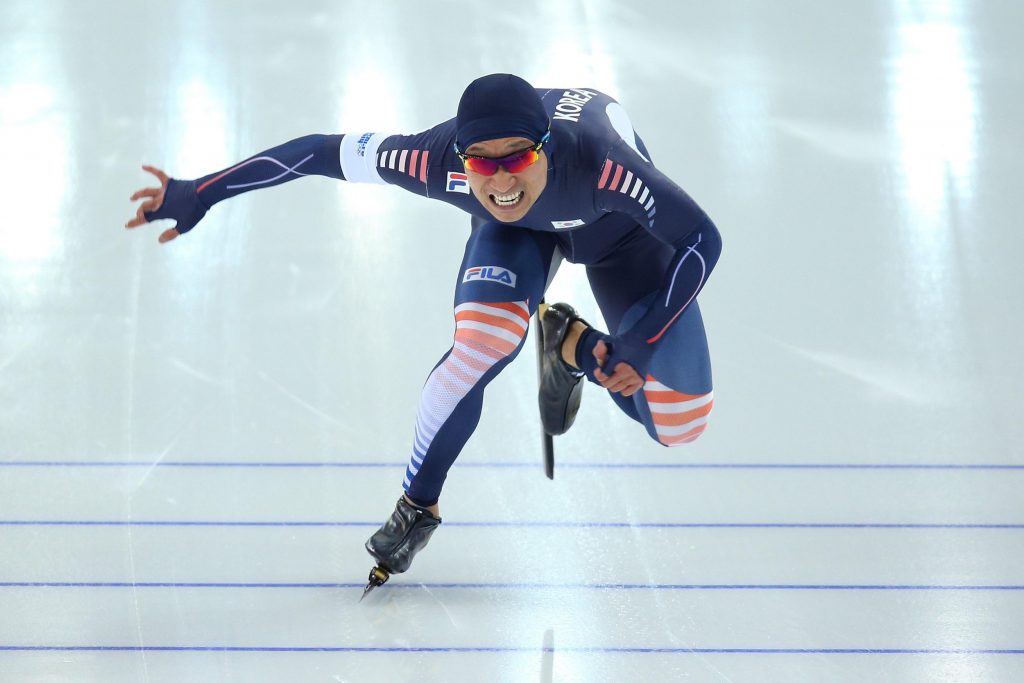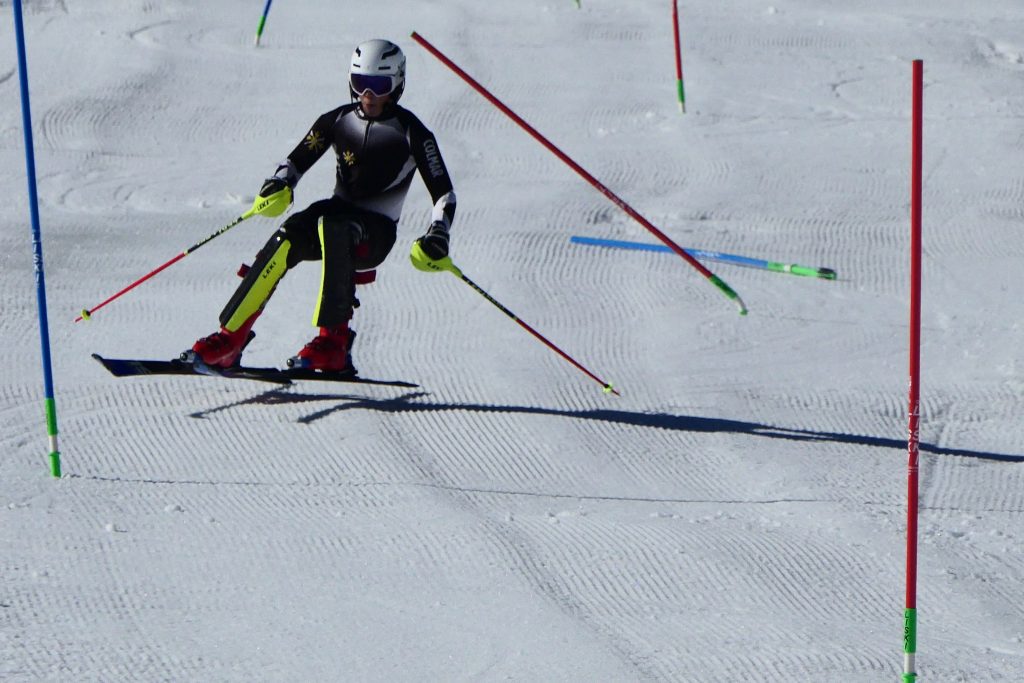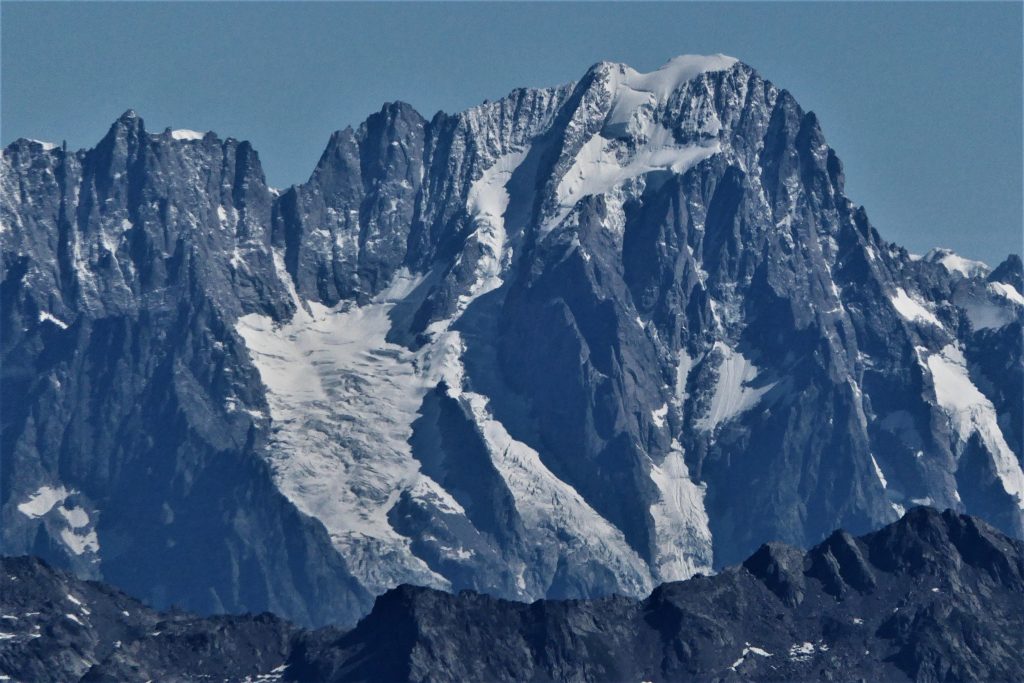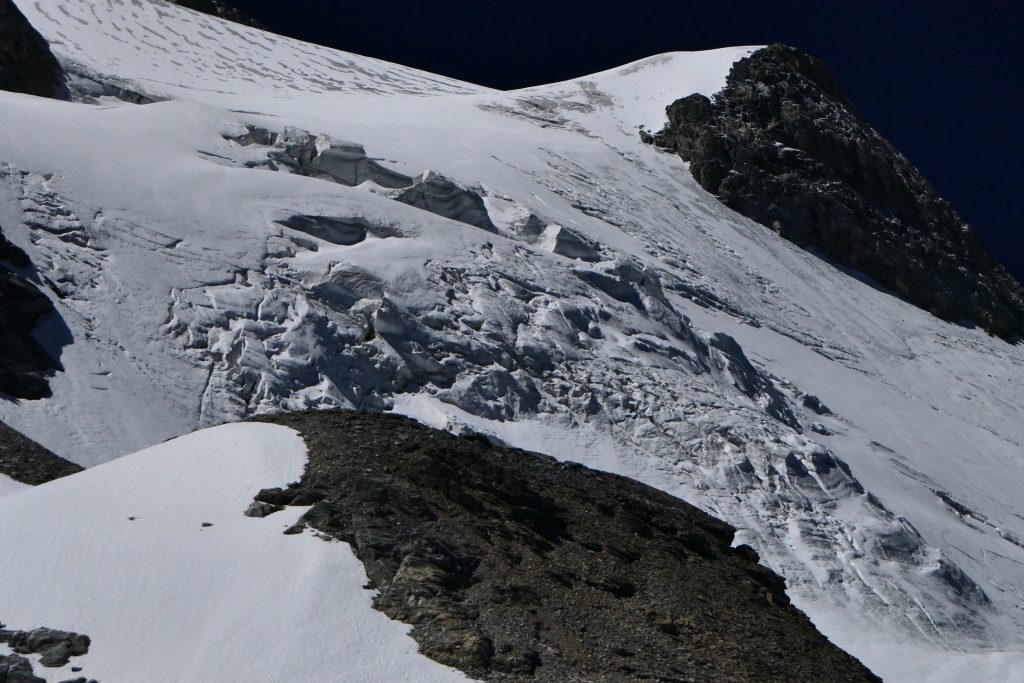Last night it froze so we had hard snow this morning. Surprisingly Alex found himself in the back seat once again and started coming out the course again. We focused hard on “anticipating” (being early) the next turn – as in the ruts and also on just being forward on the skis. By the last recorded run (first video clip below) Alex was basically back on top of his skis where he intended to be.
After the slalom training Alex continued to make use of the ruts left by one of the larger teams. When able to see Alex side on from the T-bar (when transporting slalom poles) I noticed that Alex was skiing the ruts in a constant “sitting” stance which didn’t look natural or effective. This revealed another reason why there is a constant struggle to be “forward”.
When standing on a ski with the upper body tilted forward at the hips and legs flexed – an extension of the hip joints will bring the centre of mass forward (if the extension is also at the knee!) This is also the most powerful joint in the body and the extension uses the glutes and hamstrings. Race coaches often talk about bringing the hips forward – but explanations never go beyond that – and it’s never explained as a dynamic action.
When walking or running most people (due to modern shoes) over-stride in front and when trying to go faster they reach ahead for a longer stride – then use the quads and thighs for propulsion. Good mechanics is very different – requiring the extension of the leg behind the body – with the knee extending and the hip extending – using the glutes and hamstrings for most of the power (but gravity itself for propulsion).
The angle at the hip has to come from the upper body being tilted forward and NOT from sitting.



Alex has in the past suffered from tiredness in his hip flexors – being unable to lift the knees up in front of the body. This is clearly not due to weak hip flexors – it’s due to exhausting those muscles by maintaining or constantly recovering from a sitting position after using leg retraction.
The entire upper body is consequently too far back making it impossible under most circumstances to be centred on the skis well enough to apply pressure to the fronts.
Now we have a three pronged strategy for staying forward:
- Apply pressure directly to the ski fronts
- “Anticipate” the next turn (early)
- Make the power “skating” extension at the start of the turn through the hip joints
Traps to watch for: Don’t sit!

Obviously we don’t want to be cranked forward like the speed skater or Bernal in the Tour de France all the time – but awareness allows this selective muscle use to be employed even when relatively upright. In the case of skiing the vast majority of power comes from gravity so such extreme positions aren’t obligatory.




